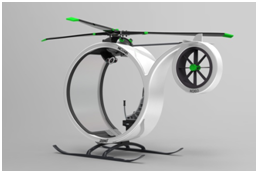
当前课程知识点:Computer-Aided Drug Design > Chapter three: The present life of CADD > 3.2 QSAR > 3.2.4 The quantitative structure-activity relationship methodology(3)
返回《Computer-Aided Drug Design》慕课在线视频课程列表
返回《Computer-Aided Drug Design》慕课在线视频列表
同学们
在学习了解QSAR模型的内部验证
相关理论知识后
我们一鼓作气
学习如何建立QSAR模型
外部验证及模型解释的知识
建立QSAR模型
最常用的就是偏最小二乘法
也就是Partial Least Squares
描述或预测一个或多个列
因变量或目标属性中的值
与其他列如解释属性
或描述符中的值之间的差异
当涉及多个因变量时
对每个目标属性分别建立一个QSAR方程
但系数是相互关联的
一般与逐一分析目标属性得到的系数不同
QSAR模型的外部验证环节中我们利用测试
集进行评价
测试集也就是我们说的test set
是从研究的化合物中挑选出
合理数量和结构特征的样本组成预测集
预测集中的样本不再参加模型的构建
利用训练集建立好的QSAR模型
对预测集中的分子的预测结果
和真实实验结果的相关性
来检验模型真实的预测能力
值得注意的是
测试集方法的代价是要减少一部分训练数据
例如通常我们从训练集中移除了30%的数据
这意味着相比于使用全量集合训练来说
我们的模型会存在更大的偏差
在标准的流程中
评价完模型效果后
我们会用全量数据
重新训练来得到最终的模型
因此在这种情流程下
测试集的误差评价结果是偏保守的
因为模型的实际误差要比报告的误差低一些
在实际中这种保守的误差估计
要比乐观的误差估计更有效
下图即为训练集和测试集的预测值
和实测值之间的相关性
可以发现其均均匀的分布在对角线附近
这说明什么
说明该模型具有较好的预测能力
在QSAR模型的解释环节
我将通过几个例子来告诉大家
如何评价QSAR模型
首先我们看一个CoMFA模型的结果图
图中左边的散点图描述的是利用该模型
得到的预测值与实测值之间的相关系
其线性关系越好代表该模型预测能力越好
右边的三维图形界面中
绿色表示增大基团会增加活性
黄色表示什么
表示增大基团活性会降低
也就是绿色和黄色表示的是立体场
这两个是相对的
那么红色和蓝色是用来表示电场的
红色表示增加带负电基团有利
蓝色表示带正电基团有利于活性
我们再看一个相对的CoMSIA的例子
结果如图所示
和CoMFA非常相似
图中左边的散点图描述的是利用
该模型得到的预测值与实测值之间的相关
那么同样的再一起来看一下CoMSIA的等势图
和CoMFA相比较
它除了立体场和静电场除的基础上
增加了疏水场H
氢键供体D以及氢键受体A
如下图的设置
注意各场的Favored和Disfavored因素
模型分析结果显示
该图立体场和静电场
实际上和CoMFA非常相似的
它能表示的意义也是一样的
绿色和黄色代表的是立体场
而红色和黄色代表的是静电场
那我们来主要看一下这个疏水场
氢键供体和氢键受体
那么疏水场我们是用黄色和白色两种颜色来表示
黄色表示增加疏水性基团有利于增加活性
相反白色表示增加亲水性基团有利于活性
同样氢键场这里使用的蓝绿色和紫色来表示
那么蓝绿色表示增加氢键供体有利于活性
紫色表示增加氢键供体不有利于活性
那我们这个地方用
紫红色和红色表示氢键受体场
紫红色表示增加氢键受体有利于活性
红色表示增加氢键受体不有利于活性
那么QSAR方法学的所有理论就讲到这里了
如何让同学们能更快地运用理论知识呢
下一节我们就带大家学习
QSAR软件功能
实现的基本操作和基本流程
谢谢同学们
-1.1 CADD-Where am I coming from?
--1.1 CADD-Where am I coming from?
-1.2 CADD-My Value
-1.3 CADD-Application of CADD in the School of Pharmacy
--1.3 CADD-Application of CADD in the School of Pharmacy
-1.4 CADD-Friendship with undergraduates
--1.4 CADD-Friendship with undergraduates
-Unit test 1
-2.1 The mystery of drug structure
--2.1 The mystery of drug structure
-2.2 Drug activity decryption-receptors and ligands
--2.2 Drug activity decryption-receptors and ligands
-2.3 The magical journey of drug discovery
--2.3 The magical journey of drug discovery
-Unit test 2
-3.1 Brief introduction of CADD's main methods
--3.1 Brief introduction of CADD's main methods
-3.2 QSAR
--3.2.1 The quantitative structure-activity relationship theory
--3.2.2 The quantitative structure-activity relationship methodology(1)
--3.2.3 The quantitative structure-activity relationship methodology(2)
--3.2.4 The quantitative structure-activity relationship methodology(3)
--3.2.5 The operation of quantitative structure-activity relationship (1)
--3.2.6 The operation of quantitative structure-activity relationship (2)
--3.2.7 The operation of quantitative structure-activity relationship (3)
-3.3 Molecular docking
--3.3.1 The molecular docking theory
--3.3.2 The molecular docking methodology
--3.3.3 The operation of molecular docking(1)
--3.3.4 The operation of molecular docking(2)
--3.3.5 The operation of molecular docking(3)
-3.4 Pharmacophore
--3.4.1 The pharmacophore theory
--3.4.2 The pharmacophore methodology
--3.4.3 The operation of pharmacophore(1)
--3.4.4 The operation of pharmacophore(2)
--3.4.5 The operation of pharmacophore(3)
--3.4.6 The operation of pharmacophore(4)
-3.5 Homology modeling
--3.5.1 The homology modeling theory
--3.5.2 The homology modeling methodology(1)
--3.5.3 The homology modeling methodology(2)
--3.5.4 The operation of homology modeling(1)
--3.5.5 The operation of homology modeling(2)
--3.5.6 The operation of homology modeling(3)
--3.5.7 The operation of homology modeling(4)
--3.5.8 The operation of homology modeling(5)
-Unit test 3
-4.1 Comprehensive case I
--4.1.1 Comprehensive case I-Homology modeling
--4.1.2 Comprehensive case I-Operation
-4.2 Comprehensive case II
--4.2.1 Comprehensive case II –QSAR
--4.2.2 Comprehensive case II -Operation
-4.3 Comprehensive case III
--4.3.1 Comprehensive case III -3D-QSAR and molecular docking
--4.3.2 Comprehensive case III -Operation(1)
--4.3.3 Comprehensive case III -Operation(2)
-4.4 Comprehensive case IV
--4.4.1 Comprehensive case IV -Pharmacophore
--4.4.2 Comprehensive case IV-Parameter explanation
--4.4.3 Comprehensive case IV -Operation
--4.4.4 Comprehensive case IV -Analysis and interpretation
-Unit test 4





